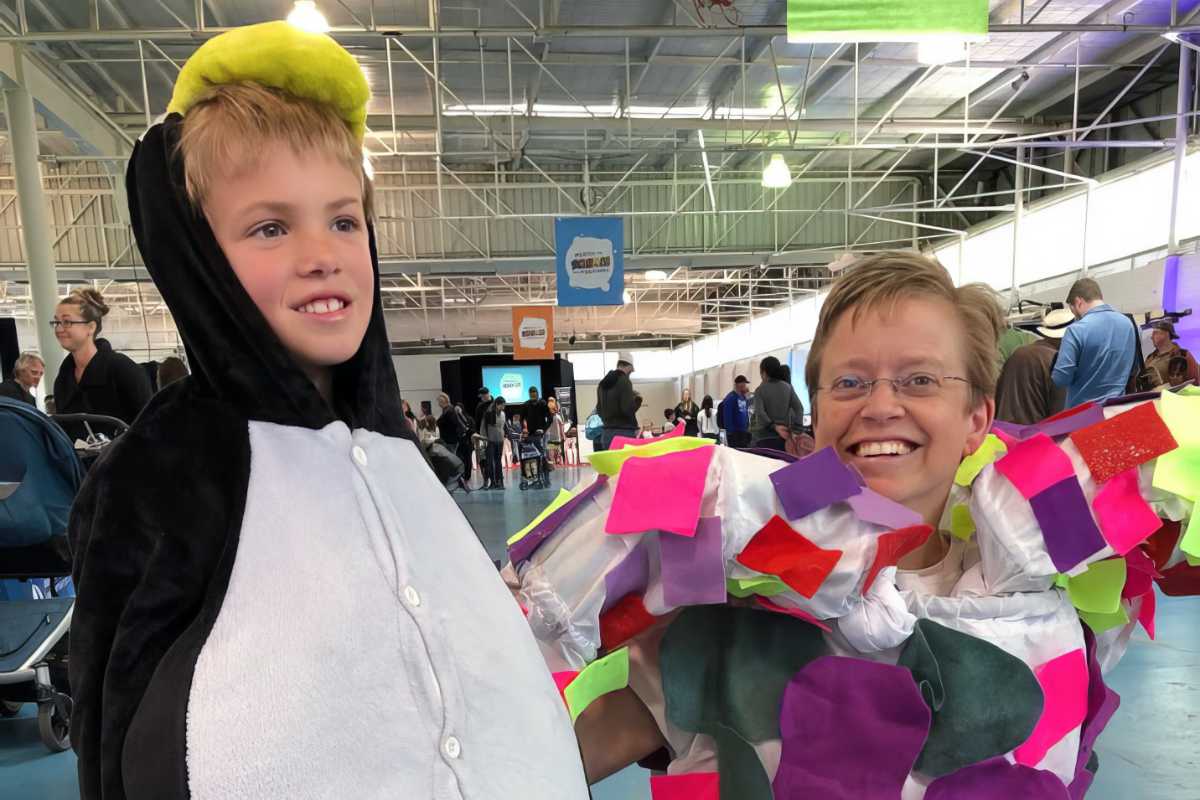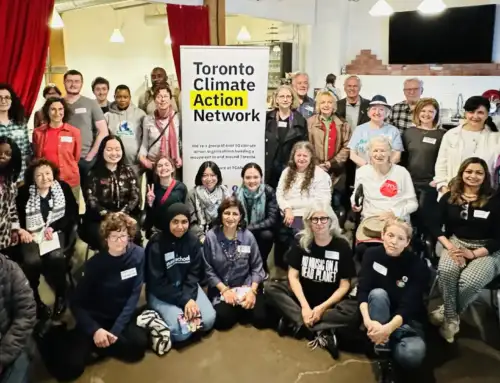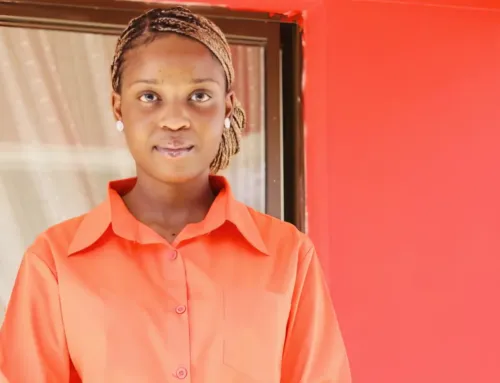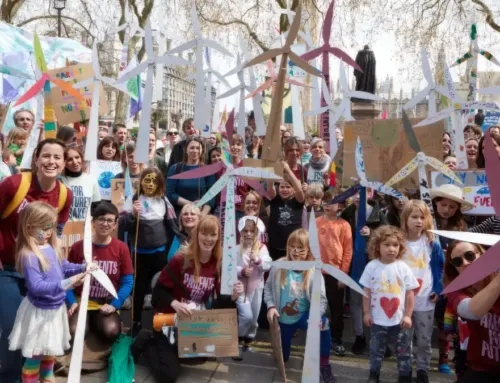STORIES
Marji Puotinen, Australia. What do Penguins and coral reefs have in common? Taking creative climate action in Australia and beyond!
Marji Puotinen is a research scientist studying the impacts of climate change and tropical cyclones on the world’s coral reefs. Combining her love for coral reefs and concerns for the climate, she founded Kids Care About Climate, a public engagement project that includes an international drawing contest, children’s art exhibit, and educational workshops featuring costumes. Marji believes that fun, interactive programming can educate and engage children while opening pathways of involvement in climate solutions for their parents, grandparents, and teachers. She shares more about her project and motivation behind it here.
The idea for a climate art program for kids was sparked as I prepared for a trip to Antarctica with other women scientists in 2019. I thought, “Hardly anyone gets to visit Antarctica. What could I do to maximize the value of being there?” That’s when the idea for a contest came to me.
I asked kids in 11 countries to draw what they love most about coral reefs and penguins. We combined 1246 individual drawings into one big banner that I filmed at a penguin colony in Antarctica and marched with it in three climate strikes.
Afterward, I felt my outreach needed to be more directly linked to action, and I came up with the idea of asking kids to draw what they love most about trees as a way to help cool the earth (to help coral reefs, penguins and people) and then planting a tree for every drawing submitted.
I took that banner, with artwork from 2629 kids in 33 nations, to mangroves, rainforests and temperate forests in Australia, Singapore and Malaysia and to schools. One drawing even sailed around Antarctica! The banner was presented in the Green Zone at COP26 in Glasgow for a week, and a video of the banner with kids from all around the world was shown at COP27 in Egypt to more than 100 negotiators.
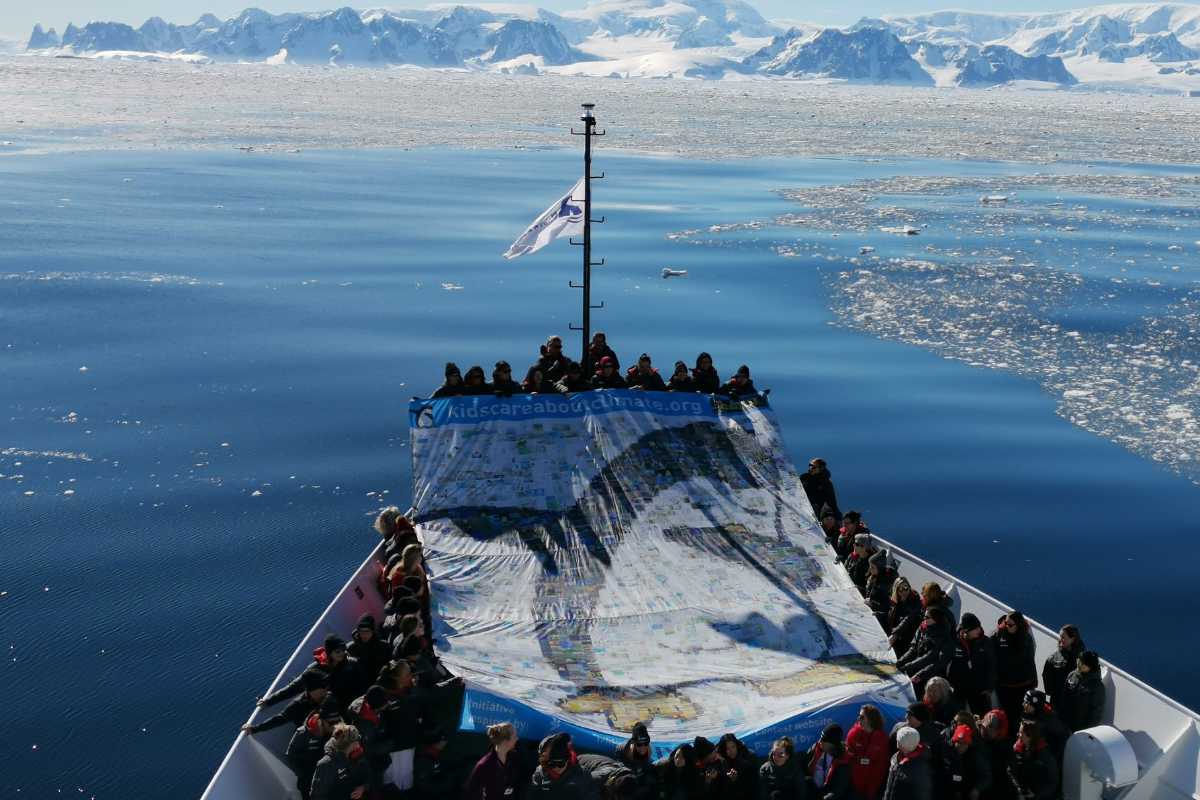
I’m now bringing the banner to forests and schools around Australia and beyond. I combine this with an interactive outreach program that starts with asking kids, “What do penguins and coral reefs have in common?” The answer, of course, is “They’re both already impacted by climate change.”
To understand why corals are at risk from climate change, it’s important to know how they work. Most science teachers don’t know because they aren’t taught. A coral reef bleaches when ocean water gets too hot and stays that way for several weeks. The coral’s chemical reactions go awry, producing toxins, and the corals eventually turn white and starve.
I explain that process while wearing a coral reef costume to play it out, letting kids interact with my costume.
I find the costumes and interactive art super effective. They don’t diminish the scientific rigor in any way, and they work equally well for all ages, including 20- to 60-year-old scientists who don’t study corals and so don’t necessarily know how coral bleaching works. Having the giant banner with me then allows kids to take direct climate action to help coral reefs – kids can be filmed with the banner via drone and record personal video calls for action to world leaders.
It’s important for people to understand that bleaching happens to individual coral polyps, not a whole reef, and that you can have a reef where part is bleached, and part isn’t. If people don’t understand that, they’re vulnerable to misinformation. During the mass bleaching event here in 2016, one politician pointed to part of the Great Barrier Reef unaffected by bleaching and said, “The reef is fine!” If people don’t understand how bleaching works, how do they decide who to believe?
It’s important to me to work with kids for multiple reasons. An obvious one is climate justice. They didn’t cause it and they’re going to get the worst of it. They deserve to know what’s going on at the most fundamental level.
People have asked, “Aren’t you giving kids anxiety by telling them about climate change?” My answer is “No, that underestimates kids.” They see what’s going on in Australia. There were bushfires on the East Coast where kids were rowing out into the ocean so they didn’t get burned up. What gives kids anxiety is people pretending it’s not happening.
The best antidote to despair and grief is positive action towards a future we choose. Kids deserve a pathway to action, so I tell them, “You can raise your voice with others via this giant banner. I’ll film you with it, speaking up for the Earth, then show that video at COP 27, 28.” That’s a strong climate action.
I hope to build kids’ excitement at being part of something that starts from their individual drawing and then becomes part of this giant banner that visits all of these places. That’s inspiring to them and then they want to do more. What you want kids to know and feel is that what one person does can make a big difference if they go about it in a way that empowers others to join in.
I involve my twin 11-year-old sons and 15-year-old daughter as much as possible because it’s fun and it’s great for them. My daughter has helped with some of the artwork. My sons enjoy performing with me. At one show, both boys wore penguin onesies and I was the coral polyp. I get them to try new things and they push me, too, because they don’t want to repeat the same thing.
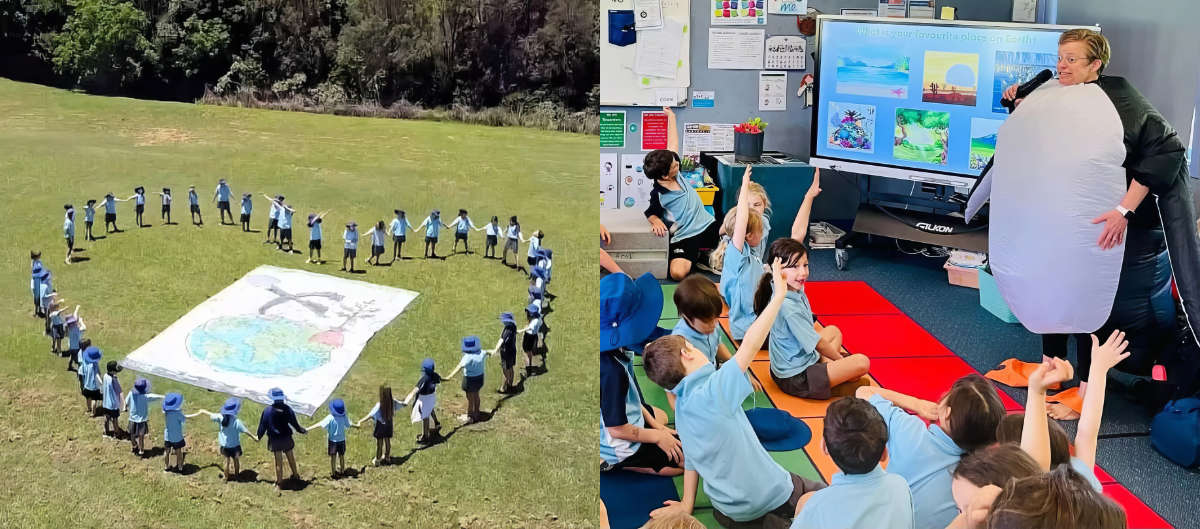
In January this year, my sons joined me at two schools in Australia to celebrate the 20 year anniversary of the Reef Guardian program which helps school kids act to protect the Great Barrier Reef. Then, I visited seven other schools dressed as a giant penguin including schools on Phillip Island near the world famous Penguin Parade . School kids were filmed sending an S-O-S to the world next to the giant banner of drawings –right on the beach where thousands of tiny fairy penguins come ashore each night to return to their burrows. Other kids were filmed making a ‘tree’ grow out of the giant banner and others making a heart around the banner, signifying their hope for a better future.
When I ran my first contest, I had no idea whether anyone would even participate. As we got more entries, people became excited and empowered. I hadn’t anticipated that and it was wonderful. At one school, a four-year-old asked me, “Who’s running this contest?” I said, “I am.” He said, “Then you’re a very important person.” Sometimes local kids from the second contest, who are now in high school, pass us on the bike path on the way to school and say, “Hey, you’re the earth and the penguins! Remember us?” You can’t underestimate the impact something can have on someone, and that impact wouldn’t happen if you didn’t do it.
